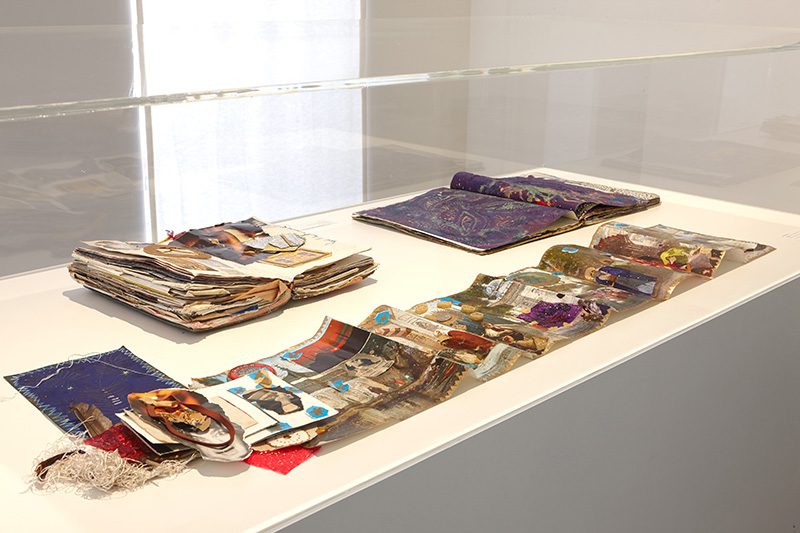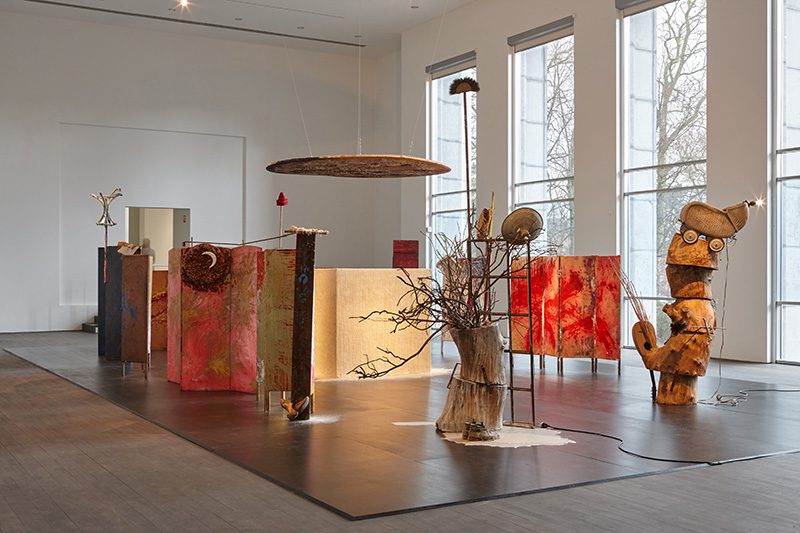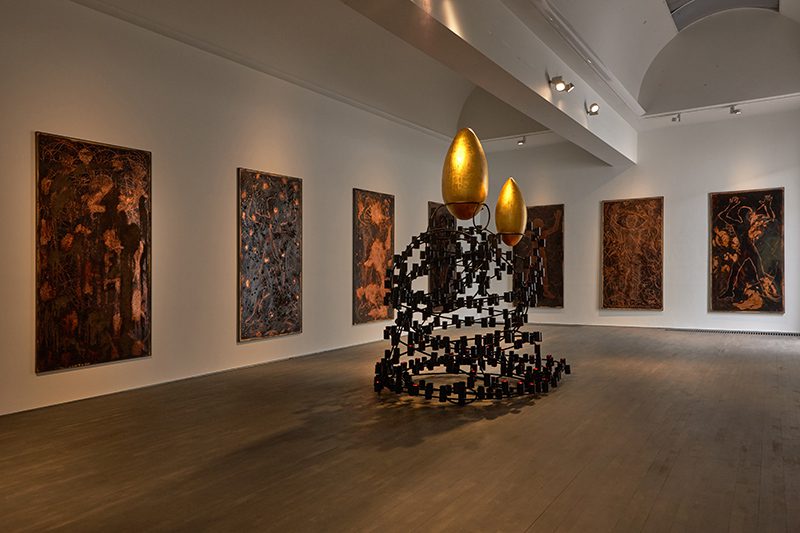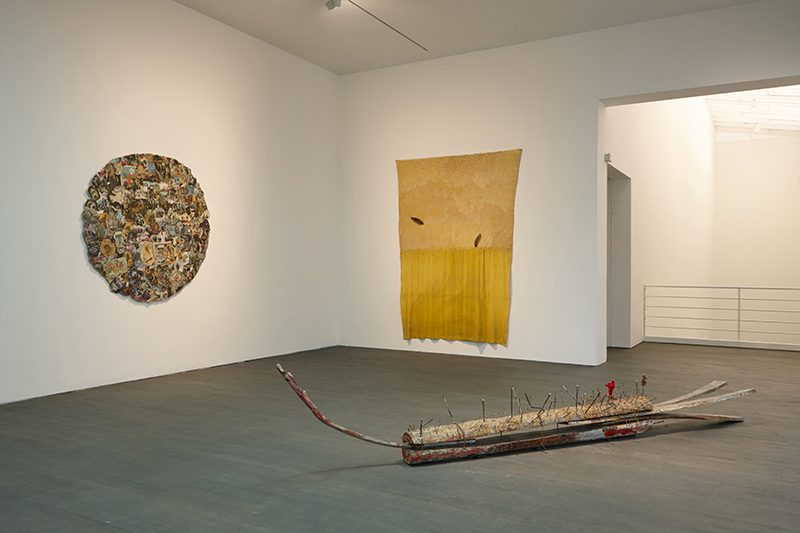ART-PRESENTATION: Michael Buthe Retrospective
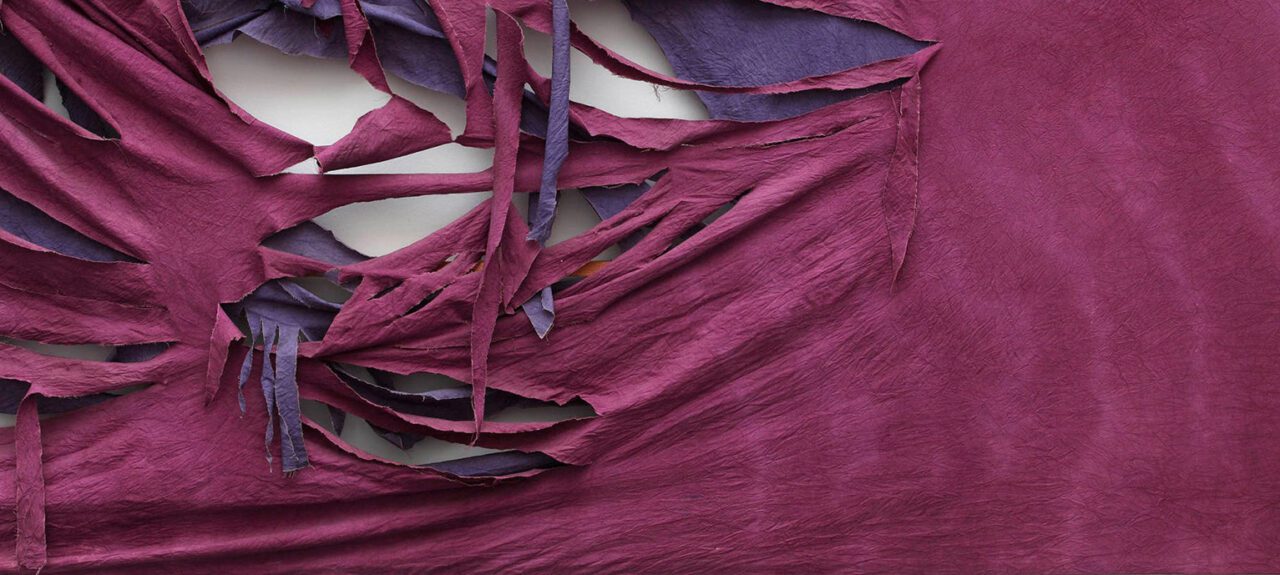 The early ‘70s was a period of transgression for young German artists. Michael Buthe, having spent the late ‘60s dismantling painting by draping tie-dyed rags over stretchers, absconded from Cologne to Morocco. On Buthe’s return, his materialistic painting quickly expanded into installations riddled with esoteric narrative elements.
The early ‘70s was a period of transgression for young German artists. Michael Buthe, having spent the late ‘60s dismantling painting by draping tie-dyed rags over stretchers, absconded from Cologne to Morocco. On Buthe’s return, his materialistic painting quickly expanded into installations riddled with esoteric narrative elements.
By Dimitris Lempesis
Photo: S.M.A.K. Archive
The Retrospective of Michael Buthe at S.M.A.K. covers his short but intensive career from the late ’60s to the early ;90s and comprises works in textiles, drawings, assemblage sculptures, paintings, photos, collages, diaries and a film. Two of his installations “Taufkapelle mit Papa und Mama” (1984) and “Die heilige Nacht der Jungfräulichkeit” (1992) act as focal points in the exhibition.Buthe’s participation in legendary exhibitions as “When Attitudes became Form” (1969 and Documenta V (1972) was important. Buthe’s textile works from the ‘60s and early 70s arose out of German Informal Art and American Minimal Art. They were a reaction to the crisis in painting as a medium at that time. Buthe followed in the footsteps of Lucio Fontana, heliterally attacked his canvases with a knife. Sometimes he also tore them, then sewed them back together again. Like his textile works, Buthe’s early drawings also had a conceptual basis. But while the textile works focused on the basic elements of painting the drawings analysed form and volumes. Sometimes they served as design sketches for sculptures. He regularly travelled to Morocco, the Middle East and Iran. In some places he stayed on to live and work there longer. A non-European aesthetic developed in Buthe’s work that was inspired by the clear light, the radiant colours and the way of life outside Europe. “Taufkapelle mit Papa und Mam” a consists of two sculptures (Papa and Mama), a circular painting above a cube covered in wax, and expressively painted folding screens to which found objects are attached. A pool of gold paint lies in the cube, like baptismal water in a font. In this work, Buthe refers, among other things, to the octagonal baptismal chapel in Florence Cathedral, baroque architecture, Joseph Beuys’ use of wax and gold and the universal symbolism of archetypal forms such as the cube and the circle. The crude, comical sculptures called Papa and Mama can be read as caricatures of such biblical parents as Adam and Eve and Joseph and Mary. Just as Marcel Broodthaers, he set up his “Musée d’Art Moderne”, Michael Buthe presents a critique of institutions by means of a personal imaginary museum. He spent several months converting his studio in Cologne into a living environment: the Musée du Echnaton , an invocatory space intended for experience, experiment, self-discovery, transformation, catharsis and healing. In Buthe’s collages and paintings from the late ‘80s, many of the elements of his earlier works come together. Some of the collages from that period form triptychs, thus linking them with the religious triptychs of Western art history. It was for Documenta IX that Buthe created his final large installation “Die heilige Nacht der Jungfräulichkeit” (1992). The work refers to the Greek Orthodox basilica in the monastery of St Catherine on Mount Sinai. The decoration there includes ostrich eggs. Portrayals of saints ornamented with precious metals have been blackened over the centuries by smoke from the candles that illuminate Piero della Francesca’s Montefeltro “Altarpiece” (c. 1473).
Info: S.M.A.K., Jan Hoetplein 1, Gent, Duration: 5/3-5/6/16, Days & Hours: Tue-Sun 10:00-18:00, http://smak.be
